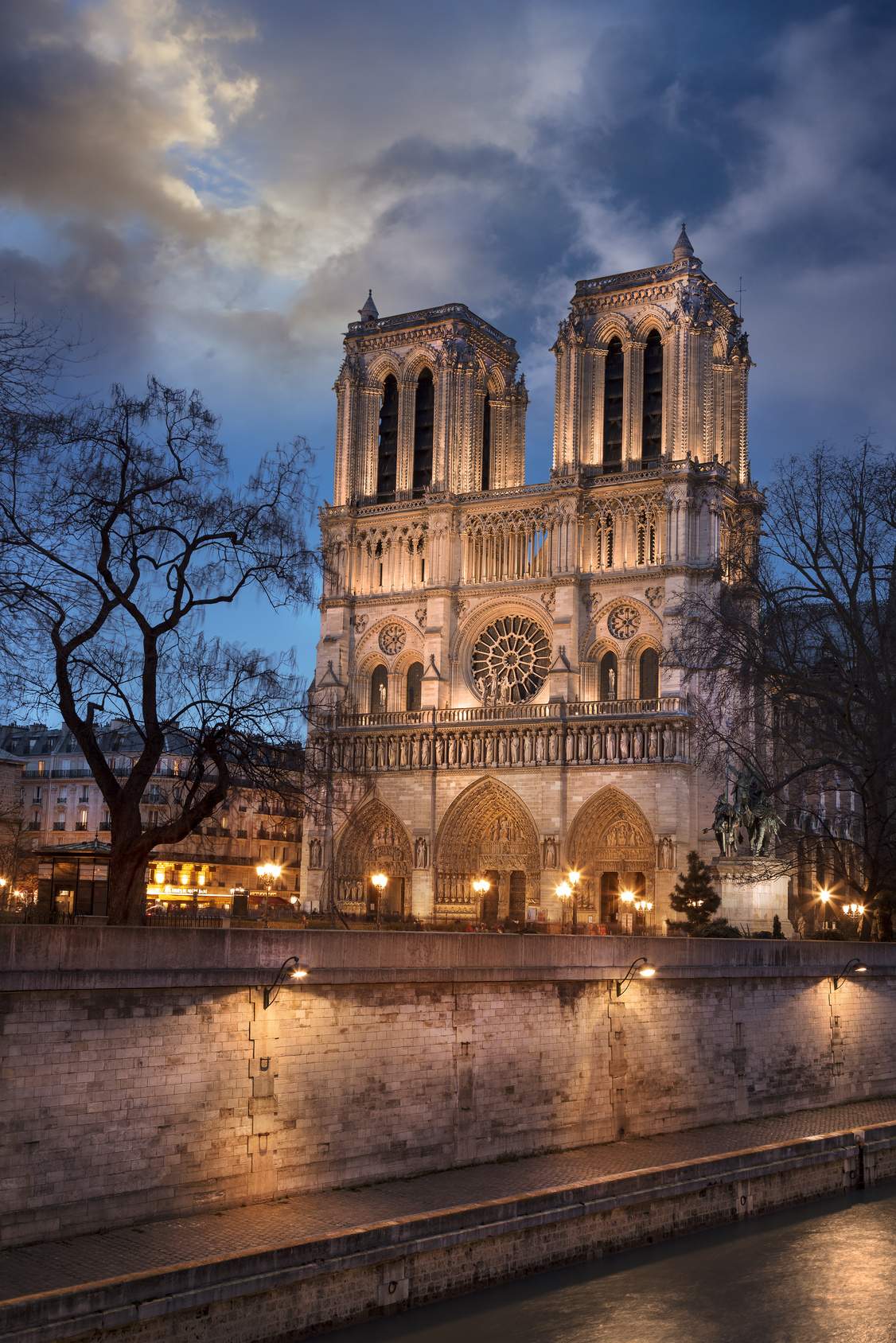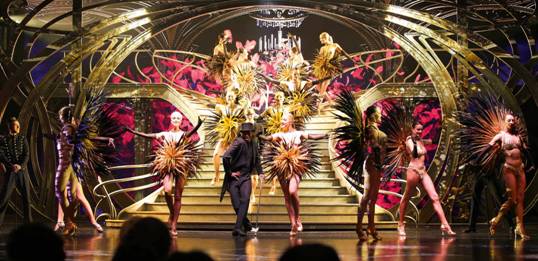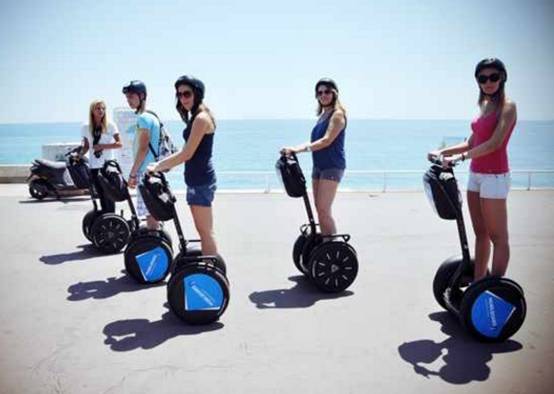A Comprehensive Travel Guide: Paris, Giverny, Étretat, Caen, Loire Valley, Versailles & Montmartre
Introduction
This itinerary offers a rich journey through the heart of northern France, blending world-famous art, profound history, stunning coastal scenery, and the regal splendor of châteaux. Starting and ending in Paris, this loop takes you through the landscapes that inspired Impressionist masters, the poignant sites of World War II, the majestic castles of the Loire Valley, and the iconic hilltop village of Montmartre.
Paris: The City of Light (Arrival)
Paris, the capital of France, is a global center for art, fashion, gastronomy, and culture. Its tree-lined boulevards, iconic landmarks, and romantic atmosphere make it one of the world's most visited cities.
Key Attractions
Eiffel Tower: The quintessential symbol of Paris. Consider booking tickets in advance for the summit or simply enjoying a picnic on the Champ de Mars below.
Louvre Museum: Home to thousands of works of art, including the Mona Lisa and the Venus de Milo. Allocate at least half a day here.
Notre-Dame Cathedral: Although still under restoration after the 2019 fire, its exterior remains a breathtaking example of French Gothic architecture.
Champs-Élysées & Arc de Triomphe: Stroll down the famous avenue and climb the Arc for a spectacular view of the city's radiating streets.
Seine River Cruise: A boat tour offers a unique perspective of Paris's major monuments, especially beautiful at night.
Practical Information
Getting Around: The Paris Métro is efficient and comprehensive. Consider a carnet (pack of 10 tickets) or a Navigo pass for longer stays. Walking is often the best way to discover hidden gems.
Accommodation: Neighborhoods like Le Marais, Saint-Germain-des-Prés, and the Latin Quarter are central and full of character.
Food & Drink: Start your day with a croissant and coffee at a local café. Don't miss trying classic dishes like steak frites, croque-monsieur, and crème brûlée.
Giverny: Monet's Garden
A short trip from Paris, Giverny is where the Impressionist painter Claude Monet lived and worked for over 40 years. His home and gardens were the primary subjects of his later work, including the famous Water Lilies series.
Key Attractions
Claude Monet's House and Gardens: The property is divided into two parts. The Clos Normand, a flower garden in front of the house, is a riot of color. The Japanese-inspired Water Garden, with its pond, water lilies, and iconic green bridge, is instantly recognizable from his paintings.
Musée des Impressionnismes Giverny: This museum explores the history of Impressionism and its legacy, often hosting excellent temporary exhibitions.
Practical Information
Getting There: Take a train from Paris Gare Saint-Lazare to Vernon (approx. 45 minutes). From Vernon station, a shuttle bus, bicycle rental, or a pleasant 5km walk will take you to Giverny.
Best Time to Visit: The gardens are in bloom from late March to October. May and June are particularly spectacular for wisteria and roses. The site is closed in winter.
Tip: Book your tickets online in advance to avoid long queues, especially during peak season.
Étretat: The Alabaster Coast
Located on the Normandy coast, Étretat is famous for its dramatic white chalk cliffs and natural archways that rise majestically from the turquoise waters of the English Channel. It was a favorite subject for artists like Monet and Courbet.
Key Attractions
The Cliffs and Arches: Walk along the pebble beach to see the Porte d'Aval arch and the L'Aiguille (the Needle) rock formation. Hike up to the Falaise d'Amont (Upstream Cliff) for views of the Porte d'Amont (Upstream Gate) arch.
Chapelle Notre-Dame de la Garde: A small chapel perched on top of Falaise d'Amont, offering panoramic views of the coast.
The Gardens of Étretat: A modern, artistic garden on the cliff top with sculpted shrubs and contemporary art installations, offering a unique perspective on the landscape.
Practical Information
Getting There: The most straightforward way is by car from Giverny/Vernon (approx. 2 hours). Alternatively, take a train from Paris to Le Havre and then a bus to Étretat.
Activities: Hiking the cliff paths is the main activity. Golf enthusiasts can play at the cliff-top golf course with stunning views.
Food & Drink: Enjoy fresh seafood, particularly mussels and oysters, at a restaurant overlooking the sea.
Caen: A City of History and Remembrance
The capital of Lower Normandy, Caen is a city deeply marked by World War II. It serves as a poignant and educational base for visiting the D-Day landing beaches.
Key Attractions
Mémorial de Caen (Caen Memorial Museum): A world-class museum that begins with the origins of World War II, covers the D-Day landings and the Battle of Normandy, and extends to the Cold War. It is an essential visit for context before seeing the beaches.
Abbaye aux Hommes (Men's Abbey): Founded by William the Conqueror in the 11th century. His tomb is located here.
Abbaye aux Dames (Women's Abbey): Founded by William's wife, Matilda of Flanders.
Château de Caen: One of the largest medieval fortresses in Europe, built by William the Conqueror, offering great views over the city.
D-Day Beaches: From Caen, it's easy to drive to the nearby landing beaches such as Omaha Beach, Utah Beach, Juno Beach, and Gold Beach, as well as the American Cemetery at Colleville-sur-Mer.
Practical Information
Getting There: Caen is about a 1.5-hour drive from Étretat. There are also direct trains from Paris Saint-Lazare.
Accommodation: Caen offers a wide range of hotels and serves as a practical base for exploring Normandy's WWII sites.
Tip: Allocate a full day for the Mémorial de Caen and at least another day to visit the D-Day beaches and cemeteries respectfully.
The Loire Valley: The Garden of France
A UNESCO World Heritage site, the Loire Valley is renowned for its magnificent châteaux, picturesque vineyards, and gentle river landscape. It was the preferred retreat of French kings and nobility during the Renaissance.
Key Attractions (Châteaux)
Château de Chambord: The largest and most iconic château in the Loire, known for its distinct French Renaissance architecture and double-helix staircase attributed to Leonardo da Vinci.
Château de Chenonceau: The "Ladies' Château," gracefully spanning the River Cher. Its history was shaped by a succession of influential women, including Diane de Poitiers and Catherine de' Medici.
Château de Cheverny: Famous for its pristine interiors and still being a family home. It was the inspiration for Hergé's Marlinspike Hall in the Tintin comics.
Château de Villandry: Celebrated for its stunning Renaissance gardens, including ornamental flower gardens, water gardens, and the world-famous recreated Renaissance kitchen garden.
Towns of Tours & Amboise: The charming city of Tours makes an excellent base. In Amboise, visit the Château Royal d'Amboise and Clos Lucé, the final home of Leonardo da Vinci.
Practical Information
Getting There: The Loire Valley is about a 3-hour drive from Caen. The high-speed train (TGV) from Paris to Tours or Saint-Pierre-des-Corps takes about 1 hour.
Getting Around: A car is highly recommended to explore the châteaux at your own pace. Organized tours from Tours or Blois are also available.
Food & Drink: The region is known for its wines (Sancerre, Vouvray), goat cheese (crottin de Chavignol), rillettes (potted meat), and tarte Tatin.
Versailles: The Palace of the Sun King
The Palace of Versailles is the ultimate symbol of the absolute monarchy of the Ancien Régime. Built by Louis XIV, its opulence and scale are staggering.
Key Attractions
The Palace (Château): Must-see rooms include the dazzling Hall of Mirrors, the King's Grand Apartments, and the Royal Chapel.
The Gardens (Jardins): A vast formal garden with meticulously manicured lawns, parterres of flowers, fountains, and statues. Access to the gardens is usually free except on days with musical fountain shows.
The Grand Trianon & Marie-Antoinette's Estate: Located within the park, these smaller palaces and hamlet offered the royal family a more private escape from court life. The Hamlet is a picturesque rustic village built for Marie-Antoinette.
Practical Information
Getting There: Versailles is easily accessible from Paris by train (RER C line to "Versailles Château Rive Gauche" station, approx. 40 minutes).
Tickets: Book a "Passport" ticket with timed entry online well in advance to skip the massive ticket lines. The palace is closed on Mondays.
Time Required: A full day is recommended to see the palace, gardens, and Trianon estates without rushing. Wear comfortable shoes as you will walk a lot.
Montmartre: The Village of Artists
Perched on a hill in the 18th arrondissement, Montmartre retains a distinct village-like charm. It was once the heart of Paris's artistic community, home to Picasso, Van Gogh, and Toulouse-Lautrec, and is famous for the dazzling Sacré-Cœur Basilica.
Key Attractions
Sacré-Cœur Basilica: This brilliant white basilica offers one of the best panoramic views of Paris. Climb the dome for an even higher vantage point.
Place du Tertre: A bustling square filled with artists painting portraits and selling their work, continuing Montmartre's artistic tradition.
The Moulin Rouge: The world's most famous cabaret, birthplace of the can-can.
Wall of Love (Le Mur des Je t'aime): A wall in Square Jehan Rictus composed of 612 lava tiles with "I love you" written 311 times in 250 languages.
Montmartre Vineyard (Clos Montmartre): 


